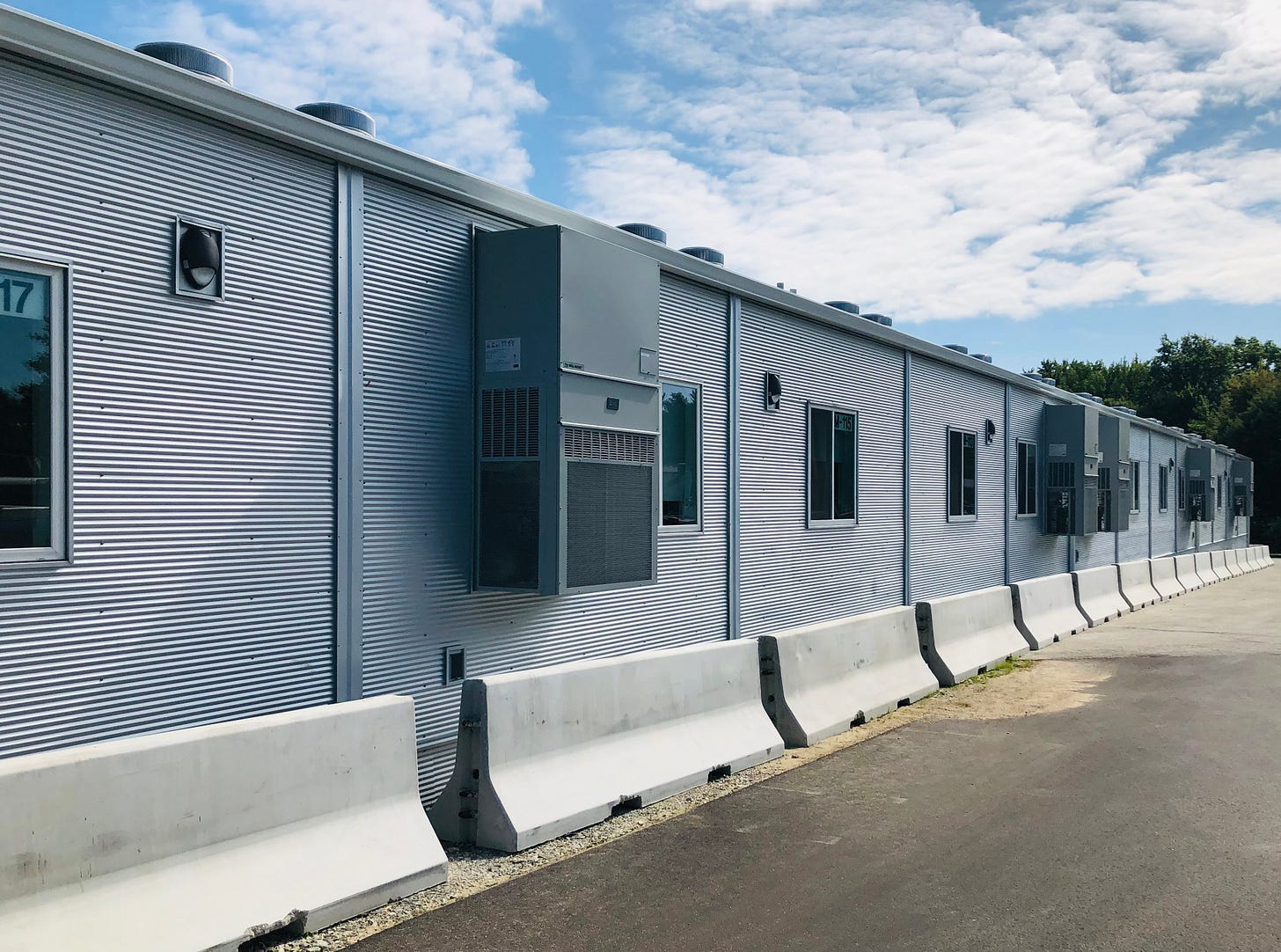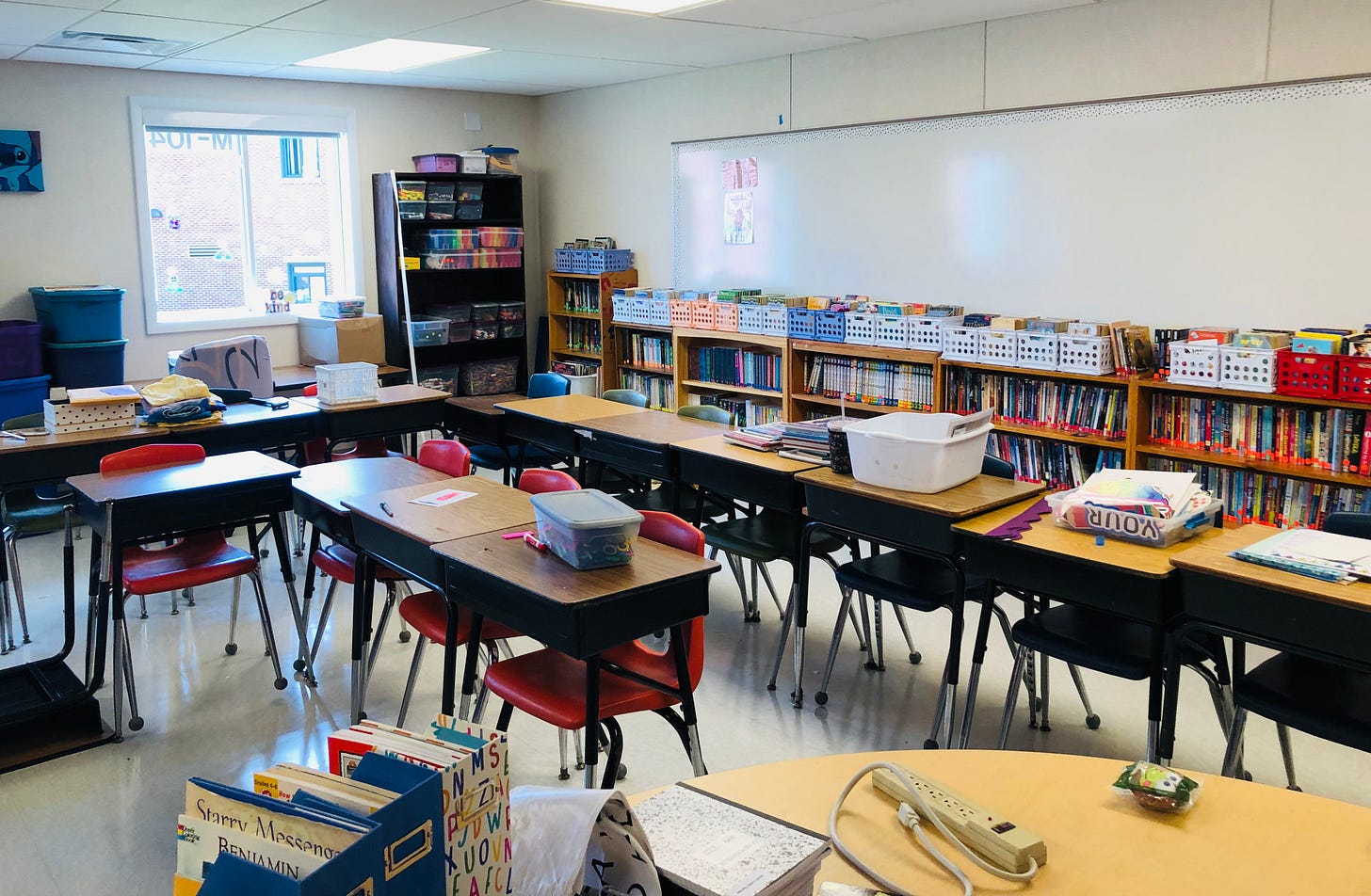In keeping in line with yesterday’s post about the frailty of memory, I visited our city’s brand new modular school building yesterday. When she gets to fifth grade next fall, these are the buildings Little Bean will be attending.
Quick background - the district is building a brand new elementary school. In the meantime, modular classrooms have been constructed outside each of the regular elementary schools in the city to hold fifth graders.
When I heard the district using words like temporary and mods, I couldn’t help but think of a trailer park. (Not that there’s anything wrong with trailer parks, mostly.)
So when they offered a open house, I figured I’d check them out. Turns out they’re not exactly pretty, but they’re fine. I met the architect and the construction manager and they gave us a tour, showed us how the mods were connected to city water and sewer, had their own sprinkler and alarm system, were designed with modern IT and HVAC, had wide, beautiful classrooms.
In other words, if they had described this place as, you know, a building, instead of a mod, I literally would not be able to tell the difference. And even then, I wouldn’t know the difference if the construction manager didn’t talk about where the seams in the building were so that it could be broken apart and moved or shipped someplace else. Something goes wrong in a mod - a big leak or tree crushes the roof - boom, it snaps right off like a Lego and they pop a new one into place!
My first thought was, neat! My second thought was what this essay is about and how it relates to yesterday’s column.
This whole building, this whole grade, the entire physical space where my daughter will spend a year of her life studying is, well, temporary. A place holder. A book mark. She’ll drift through it like fog and then in a couple years as she heads deeper into middle school, it’ll just be gone one morning, returned to the parking lot it sits on.
This is a temporary building, designed to be temporary, that is larger than my entire elementary school was.
Let’s ask some architects what they think about space and design.
Frank Lloyd Wright said, "The present is the ever moving shadow that divides yesterday from tomorrow. In that lies hope." Let’s ignore Frank Lloyd Wright, I never understand what the heck he’s talking about.
David Adjaye said, “Buildings are deeply emotive structures which form our psyche.” Do you still dream about your high school locker? Your parents’ basement? I still feel in my fingertips the iron railings of the front set of steps that led to the front door of my elementary school. Physical space has a way of drilling into our memories. But what if the space is not designed to be remembered? What then?
Charles Eames said, “Recognizing the need is the primary condition for design.” The space itself, the floors, classrooms, hallways, isn’t as important as the need - a school. If the space fulfills that purpose, the design has done it’s job. My daughter doesn’t have to remember the actual building because she’ll remember the experience of fifth grade.
It’s best, I think, to stick with Charles on this one because it’ll likely be the teachers, her friends, her experiences that stand out in her memory and as a shared experience when she’s older. When I think of my years in elementary school, while that bare patch of ground where the school once stood does feel strange to me, it doesn’t diminish the experience because it’s no longer there.
Well, maybe a little… but life carries on.
SPECIAL NEWS: There’s a big, special announcement coming tomorrow my friends and if you subscribe to Day by Day, you’ll be the first to hear it. Stay tuned!
.







My elementary school had two different kinds of module classrooms when I was a student. One was a set of three rooms at the end of a hall. The other was a corridor of four rooms to the left of the first three. I spent a year in one of the latter set of rooms. They had long outlived their intended use, sounded hollow when you walked through, and there was a leak when it rained, but the rooms themselves were bright and colorful. Several years after I moved on, the "portables", as they were called, were removed and two entirely new halls were built, transforming the school from an L into a square.
I had the nuns for teachers in a dimly lit, darkly paneled noisy, cold elementary school. I'm certain you and your daughter's experiences will be more memorable than mine!